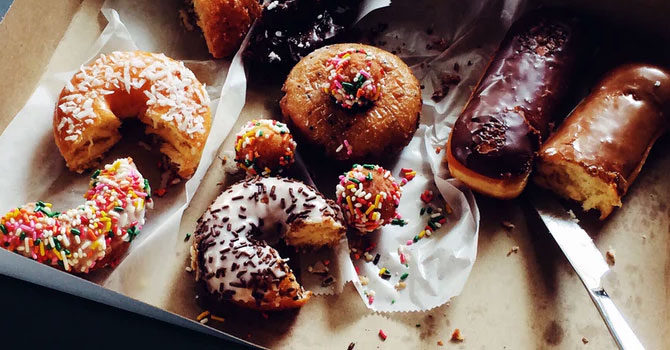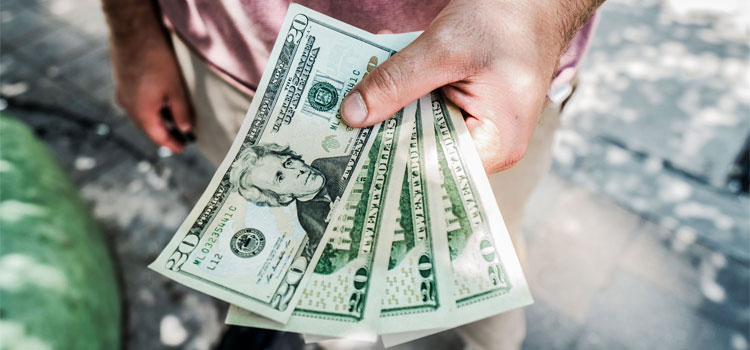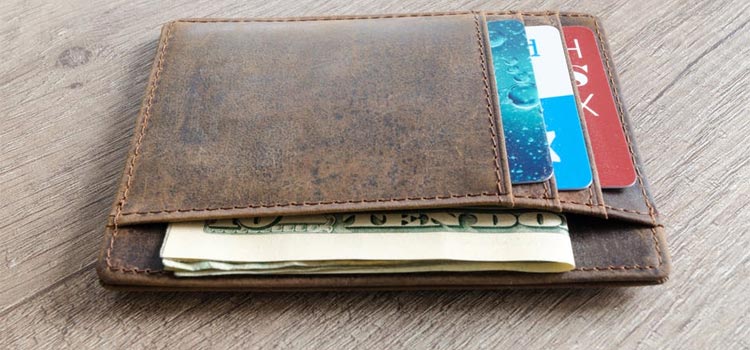For people who are gifted with making sweet creations and have been the go-to cake-maker of family reunions, and even gotten treats giveaways or cupcake commissions from friends, the next progression is deciding how to sell baked goods from home.
- Inbox Dollars - Get paid to check your email. $5 bonus just for signing up!
- Survey Junkie - The #1 survey site that doesn't suck. Short surveys, high payouts, simply the best.
- Nielsen - Download their app and get paid $50!
And why not?
You have the skills, the passion, the market, and now you just have to make it official.
This post will guide you on how to sell baked goods from home, regardless of how big or small you’d like the business to go.
6 Steps to Take to Sell Baked Goods from Home
Selling baked goods to your officemates or family friends can bring you extra cash to your savings, but if you want to make this side gig income a lot bigger, follow these 6 steps:
1. Complete Legalities
The business permits and requirements will depend largely on your location. You may need one, any or all of the following:
- Create a business entity (like an LLC or partnership) – Launching a business entity is smart because it separates your personal assets if ever your ex-customers decide to sue you for getting sick from eating your baked goods.
- Business license – Most cities require a business permit regardless of how big or small you plan your business to be. Note that this license is needed for you to operate the business, but you might be required to obtain additional permits to run a food business from home, such as ‘food preparation license’ or ‘food handler permit’.
- Zoning board permission – Sometimes, in-home businesses might not be allowed to open up shop in the residential area where you live. Check the zoning board about their policies or requirements to be given permission.
- Health and fire department approval – When obtaining a food business permit, one major part of that process is to seek approval from the city’s health department and fire department. They will visit your home, check your kitchen (or any area where you’ll be baking) and give recommendations on how to renovate your kitchen to be fit for producing baked goods.
- Sales tax – Some states will require you to collect sales tax on your baked goods and pay either monthly or quarterly.
- Insurance – Seek advice from an insurance company to determine the insurance type you need to run your home-based baking business.
Of course, the easiest way to learn which permits you’ll need is to go visit city hall.
They’ll direct you where to go, from the health or fire department, to the business regulations office, and so on. Prepare to pay fees for permits – these are rarely free of charge.
2. Gather Supplies
This will become a major part of your business plan, since gathering all the ingredients and supplies will give you an idea of how much investment you’ll need to start your business. During this phase, you should be able to:
- Write a business plan – Not only will getting a business plan set-up help you in assessing finances, it will also help in anticipating the future.
- Decide on you main products – Focus on your best-sellers, before expanding your menu. Once you settle into your new business, you’ll learn which ones are more profitable and marketable.
- Make a list of ingredients – This includes flour, sugar, eggs, and any other items you’ll need to create your baked goods. You’ll have to replenish these ingredients regularly, so it is better to have a pantry or storage room to keep them organized and easier to detect once a particular ingredient is running low.
- Make a list of supplies – Separate cooking equipment you’ll only need to buy once in a few years (such as oven, stand mixer, and so on) with supplies you’ll need regularly (like spatula or cupcake liners).
- Decide on packaging for your baked goods – Go with a box, plastic, or an eco-friendly packaging. Regardless of the type of packaging you choose, you’ll get discounts when you buy in bulk.
Once you’ve gathered all the supplies, it would take you several weeks or a few months to have a regular shopping regimen for your ingredients. Make sure to keep all receipts so you’ll be able to do accounting accurately.
3. Set-up Your Online Accounts
I know marketing can be scary, but the internet has allowed small businesses to thrive and compete with better-financed companies because promoting your baked goods business online is virtually free.
However, you do have to set-up these accounts and manage them by adding news, promos, and other relevant posts. For starters, make sure you build online presence on:
- Facebook – Create a business page, set-up cover and profile photos, list down contact information, and update it with at least 1 post a week.
- Instagram – Instagram is a haven for drool-worthy pictures, so there’s no better way to promote your baked goods than to share photos of them on Instagram. There are different ways to earn money from Instagram, but if you’re smart with marketing, there really is no need to explore other methods.
- Twitter – For quick announcements and answering inquiries, Twitter is a great platform because it is designed to keep messages short.
- Pinterest – Like Instagram, Pinterest is filled with beautifully-crafted photos. The main difference is that Pinterest could serve as your online menu or product catalog, while Instagram is a bit more informal for anything-goes kinds of posts.
All these platforms give you additional (but paid) marketing tools when you’re ready to expand. Boosted posts on Facebook is a good example and a cheaper way to promote your baked goods to a targeted audience.
4. Market Locally
Aside from getting the word out about your baked-goods business online, you also must be promoting your products locally. Print out fliers and posters, then post it on bulletin boards and other storefronts (with permission from storeowners of course).
The great thing about home-made products is that places like the Farmers Market welcome small business owners like you with open arms. As such, slots get filled out pretty quickly when registration opens up. Be on the lookout for the next dates and locations will be.
And if you’re having a hard time getting a slot into your local farmer’s market, here’s a comprehensive guide to ensure you always do.
Word of mouth is still important, so make sure you build an excellent rapport with customers and your products would do the promoting for you.
When customers taste your baked goods and they become a fan, there’s a good chance that they’ll send referrals your way.
5. Keep Track of Incoming and Outgoing Funds
Tracking expenses and revenues is important to any business, since it is a solid representation of your gains or losses. You can track cost traditionally with files and folders, or you can utilize a do-it-for-you service like ShoeBoxed.
Make sure you begin your operations with a bookkeeping system, so you wouldn’t have to rush during tax season.
If you’re hiring people, set up a payroll system as well.
No joke. Here are the fastest ways to make easy money online. Click here to see how.
6. Expanding Your Business
If you’ve set up everything and you feel that your business is ready to jump off to another level, there are several things you should consider:
- Product research – Add more items to your menu. Try seasonal offerings. Or make a survey what your existing customers would like you to make.
- Competition research – Check out what your competitors are doing. You don’t necessarily have to copy everything they’re doing, but if you look at
- Find partners proactively – Look for restaurants, cafes and other local food shops that will be willing to sell your baked goods on site. This is particularly helpful if your in-home baking business has no storefront.
- Create an online community – If you don’t have a website yet, make one. You can even create an online community by working on a food blog and sharing recipes. It’s a great way to promote your company without being in-your-face to customers with ads.
The Bottom Line
It goes without saying that your baked goods should be better than most home-baked goods.
It isn’t really necessary to have baking certifications, awards or formal training to build a full-pledged baking business from scratch.
You do have to practice safe food preparation, learn everything about food allergies and other dietary issues. If you have a food service background, that training would have probably been instilled in you until today.
Plus, use the information above as a checklist of-sorts on how to sell baked goods from home and hopefully become one of the hundreds of home bakers with thriving small businesses in the country.
If you’re not into baking, you can earn money from your garden if you’re a green thumb or sell your food products to the nearest grocery store.







